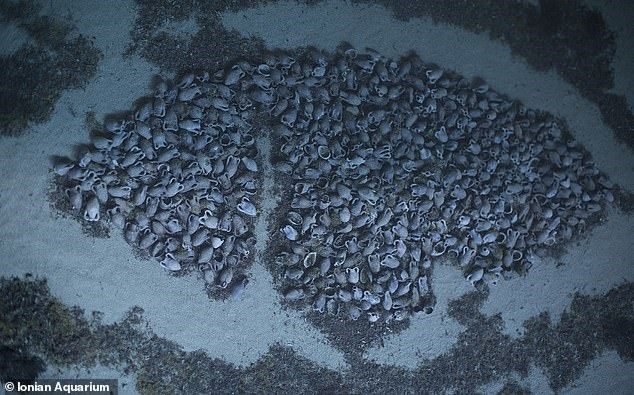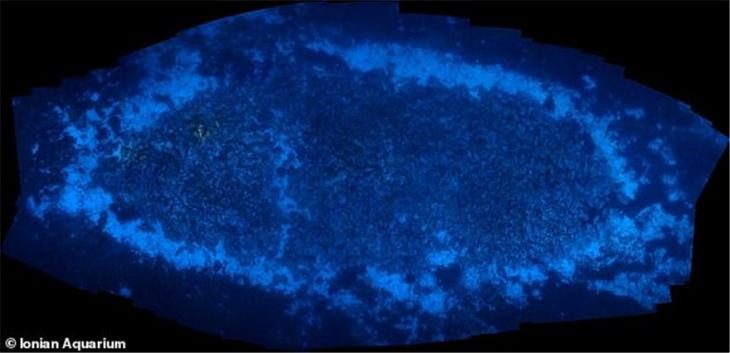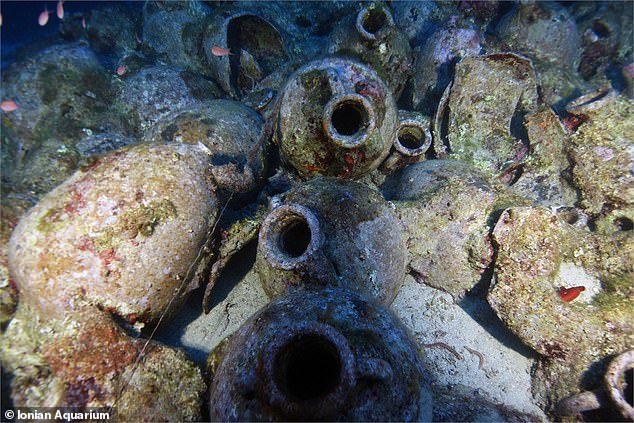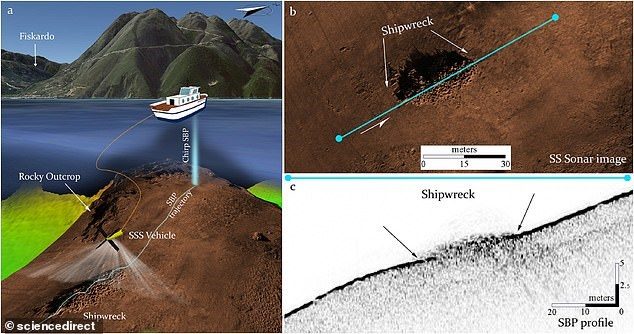
The 110-foot-long ship and its cargo, discovered off the coast of the Greek island of Kefalonia, could reveal new information about the shipping routes taken by Roman traders across the Mediterranean.
The wreckage was found using sonar equipment and contains thousands of amphorae, elaborate pots used for moving food and wine.
The wreck was found near the fishing port of Fiskardo on the north coast of Kefalonia, dates between 1 BC and AD 1, Greek researchers say.
The cargo is visible on the seafloor and is in a good state of preservation.
'It's half-buried in the sediment, so we have high expectations that if we go to an excavation in the future, we will find part or the whole wooden hull,' said George Ferentinos at the University of Patras, Greece, who led the study of the findings.
The Fiskardo shipwreck is one of the largest four found in the Mediterranean Sea, and the largest yet found in the eastern Mediterranean.
The ship's dimensions are thought to have been about 110-feet long and 42 feet wide, with a cargo load almost as big — 98 feet by 39 feet.
Its cargo is estimated at about 6,000 amphorae, a distinctive type of Roman pot with two handles and a narrow neck.
The shipwreck was found off the present-day Fiskardo fishing port, where ancient houses, bath complexes, a theatre, a cemetery and a tomb dating back to Roman times between 146 BC and 330 AD, were recently found.
This indicates that Fiskardo was an 'important port at that time', the researchers said in their study, published in the Journal of Archaeological Science.
The researchers say Fiskardo port was probably a significant calling place along the Roman trading route that ferried goods around the Mediterranean.

It has not yet been decided if the shipwreck is to be raised from the bottom of the ocean, but if recovered further study could reveal more about its origin.
The underwater sonar techniques may also provide information about the ship's hull stowage and its vulnerability to human activity, as well as what might have sunk the ship.
While earlier Mediterranean shipwrecks were found using Scuba divers, the team used computer vision techniques to process side-scan sonar seafloor images.
This kind of modern underwater sensing technology is a valuable tool for separating ancient shipwreck targets from other seafloor features with similar acoustic signatures.





Reader Comments
`Ironwood;
and
Natalie Wood.
RC
Note also that they believe the wooden ship remains under the sand.
I would guess that BBars was thinking of something like ceramics strengthened with 'rebar' made of hemp, straw, etc. (As I recall, there was a time that there were 'brick boats' and bricks are made of ceramic plus straw. - plus maybe even concrete - I forget.)
Generally, I guess.
Interestingly, I was just discussing the Anthykera mechanism with a friend. I hopped on here and this was the first story I saw.
R.C.
R.C.
just stupid thoughts.
Likewise in the US's wars against Asians. sucn as Japanese or Vietnamese. (Yeah, right! There's no difference between cultures! My ass!)
If you've never read them. you should IMHO read the two best war memoirs as they are each now free:
- (WWI, France); Under Fire/La Feu, by Henri Barbusse; [Link] and,
- (WWII, Pelielu & Okinawa); "With the Old Breed", by E.B. Sledge at [Link]
If there exists either or both you've not read, I'm confident that you will be grateful for these 'truthy' links.
RC